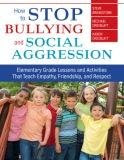Mike and I present bully prevention workshops for parents throughout the country. We provide best practices that are effective, safe and empowering. Our experience has been that when it comes to their kids getting bullied, most parents understand that a physical response or verbal comeback does more harm than good.
Of course, they want to know what to suggest to their child to stop the bullying while maintaining safety and self-esteem. Many parents are familiar with suggestions such as ignore verbal taunts, walk away when someone is bothering you and telling the bully, “Stop.” They ask if these are valid strategies.
The answer is yes, they are effective strategies -- when done correctly. The key to success is the details and practice. We teach the detail of these strategies through role-playing (very effective and a lot of fun for Mike as he gets to bully me).
When I role-play ignoring or walking away from Mike the Bully, I do it without showing emotion or gesturing in any manner that will reinforce him. My style expresses confidence and a refusal to get caught in his trap. I show the audience how to “be boring” so the bully just gives up. Simply put, I’m no fun to bully.
And when I choose to tell the bully to “Stop” or “Cut it out,” I keep a distance of 1.5 - 2 arm lengths while making eye contact and using strong body language and tone of voice. Strong body language means my head is up, my back straight and my hands are by my sides or down in front. I limit any extra movement in my body, head and eyes. My tone of voice is controlled, yet neutral; it expresses seriousness and confidence.
Although the suggestions aren’t necessarily new to our audience, our “show” demonstrates the details of these strategies and parents literally see the importance of role-playing bullying scenarios with their child in a safe environment. Role-playing is vital for children to be confident that when they are in an actual bullying situation, and there is real emotion involved, they can respond effectively to stop the bullying.
Ultimately, audience members say, “This is great stuff! I’ve been writing notes on your handouts, but do you have those details in a book?” In the past, we’d respond, “We’re working on it.” As most of our readers know, our book, How to Stop Bullying and Social Aggression, is now available. Although written for educators, each lesson and activity can be taught, discussed and practiced at home between parent and child(ren). Chapter 5, Teaching Assertiveness and Chapter 6, Responding to a Bully, detail these strategies in an easy to read manner with fun activities to practice.
Thanks for asking and as always, we look forward to your feedback.
Steve
For more information on how to prevent bullying, visit the bullying experts at http://www.balanceeducationalservices.com/index.html.
Subscribe to:
Post Comments (Atom)



No comments:
Post a Comment